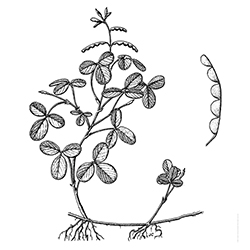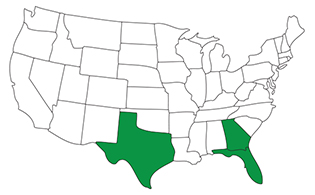

Creeping Beggarweed
Desmodium canum
Creeping Beggarweed is a perennial broadleaf weed that is sometimes referred to simply as Beggarweed. It is also known by its scientific name, Desmodium canum.
Identify

Creeping

Pinnately Trifoliolate

Elliptical
Creeping Beggarweed has a large taproot with many long, extensively branched stolons rooting at the nodes. This causes the “creeping” characteristic. The leaflets on Creeping Beggarweed are also helpful when identifying this broadleaf weed. They are hairy, varying in size, elliptical in shape, pointed at the tip and rounded at the base. The stems are also hairy and ascend vertically. The plant can also become woody as it matures. Creeping Beggarweed also produces flowers that are reddish-pink in color. Reproduction occurs by seeds, stolons and broken taproots.
Life Cycle
This broadleaf weed grows in open grass but has the ability to grow in disturbed areas. Creeping Beggarweed is commonly found in the southern part of the United States.

Control
Desmodium canum can be a rather difficult broadleaf weed to control using cultural methods—such as proper watering and mowing routines—largely due to the fact that its sizable taproot makes hand-pulling difficult. Additionally, the weed's seedpods are easily disrupted, and successful hand-pulling can result in spreading them to other parts of your lawn. Creeping Beggarweed can also survive routine, close mowing.







